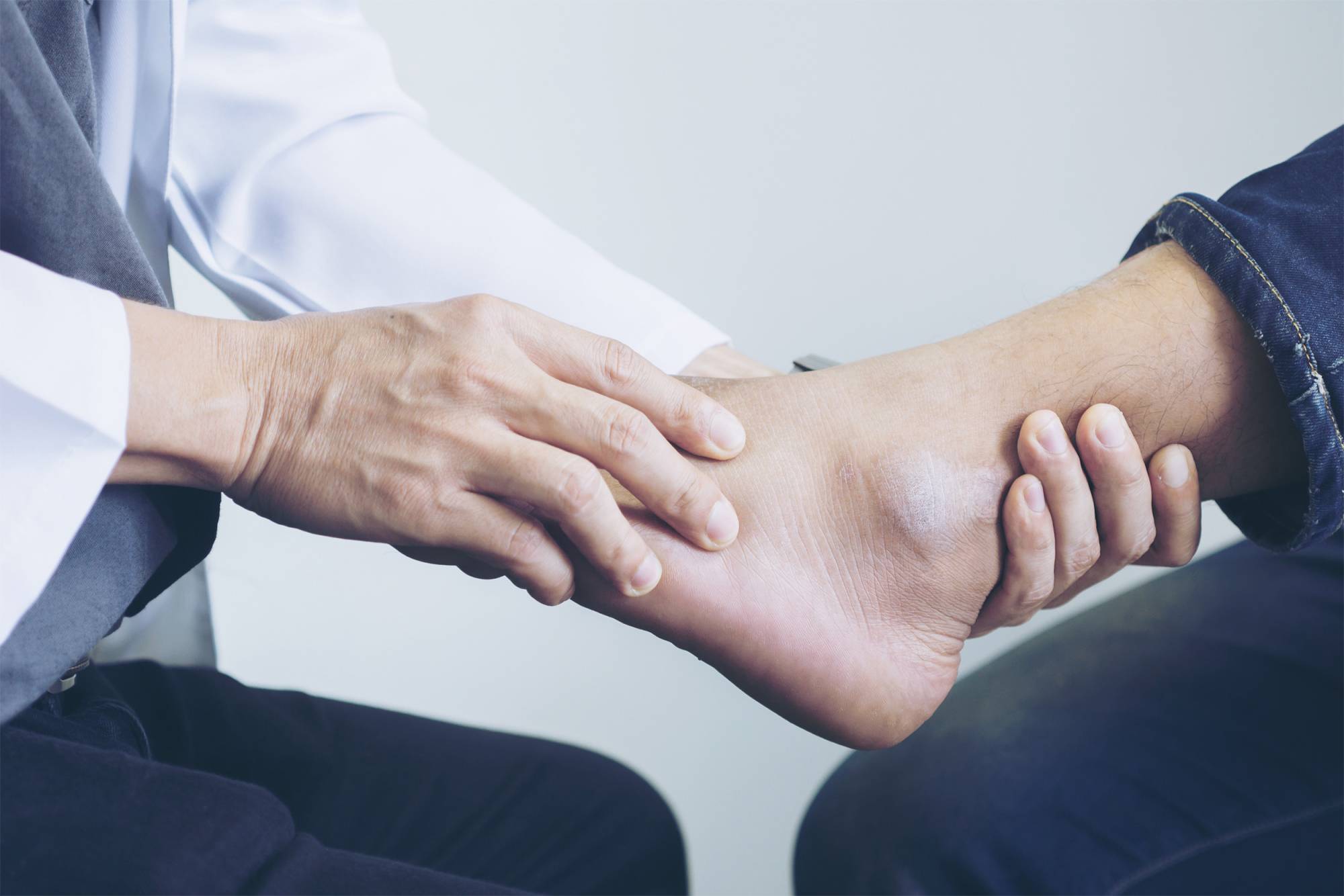- Accueil
- Chirurgie du pied
- Aponévrosite plantaire
- Effects of Plantar Fascia Stiffness on the Biomechanical Responses of the Ankle–Foot Complex
Effects of Plantar Fascia Stiffness on the Biomechanical Responses of the Ankle–Foot Complex
By Jason Tak-Man Cheung, Ming Zhang, and Kai-Nan An
Jockey Club Rehabilitation Engineering Centre, The Hong Kong Polytechnic University, Hung Hom, Kowloon, Hong Kong, PR China
Biomechanics Laboratory, Department of Orthopaedic Surgery, Mayo Clinic, Rochester, MN, USA
Abstract
Background: The plantar fascia is a crucial stabilizing structure of the longitudinal arch of the human foot, particularly during midstance of the gait cycle. Understanding its functional biomechanics is essential for developing rehabilitation, orthotic, and surgical treatments for plantar fasciitis. This study quantifies the biomechanical responses of the ankle–foot complex with varying plantar fascia stiffness.
Methods: A detailed three-dimensional finite element model of the human foot and ankle was constructed using 3D reconstruction of MR images. The study evaluated the effects of different elastic modulus values (0–700 MPa) of the plantar fascia on the stress/strain distribution of bony, ligamentous, and encapsulated soft tissue structures.
Findings: Results indicated that decreasing the Young’s modulus of the plantar fascia significantly increased the strains on the long and short plantar and spring ligaments. Simulating plantar fascia release shifted peak von Mises stresses from the third to the second metatarsal bones and increased stresses at the plantar ligament attachment area of the cuboid bone. A decrease in arch height and midfoot pronation was predicted, though not leading to total collapse of the foot arch.
Interpretation: Surgical dissection of the plantar fascia may induce excessive strains or stresses in the ligamentous and bony structures. It should be well-planned to minimize the impact on its structural integrity to reduce the risk of developing arch instability and subsequent painful foot syndrome.
Introduction
The plantar fascia stabilizes the longitudinal arch of the human foot during midstance of the gait cycle. Understanding its biomechanics helps establish a rationale for treatments of plantar fasciitis, including rehabilitation, orthotic, and surgical interventions. Plantar fasciotomy, a common surgical procedure for chronic heel pain caused by plantar fasciitis, reduces foot stiffness and creates a more deformable foot arch (Davies et al., 1999). However, this biomechanical alteration raises concerns about decreased arch stability and compensation by adjacent ligamentous structures.
Methods
A geometrically detailed three-dimensional finite element model of the human foot and ankle was constructed by 3D reconstruction of MR images. The model incorporated geometric and contact nonlinearities, and a sensitivity study evaluated the effects of varying elastic modulus (0–700 MPa) of the plantar fascia on the stress/strain distribution of bony, ligamentous, and soft tissue structures.
Findings
The study found that decreasing the Young’s modulus of the plantar fascia increased the strains in the long and short plantar and spring ligaments significantly. Simulating plantar fascia release shifted peak von Mises stresses from the third to the second metatarsal bones and increased stresses at the plantar ligament attachment area of the cuboid bone. This also led to a decrease in arch height and midfoot pronation, though it did not cause total collapse of the foot arch.
Interpretation
Surgical dissection of the plantar fascia can induce excessive strains or stresses in the ligamentous and bony structures. Therefore, surgical release of the plantar fascia should be well-planned to minimize the impact on its structural integrity and reduce the risk of developing arch instability and painful foot syndrome.
Conclusions
The plantar fascia plays a crucial role in stabilizing the longitudinal arch of the human foot during midstance of the gait cycle. Reducing its stiffness beyond 50% may induce significant strains or stresses in the ligamentous and bony structures. If necessary, surgical release of the plantar fascia should be meticulously planned to minimize its impact on structural integrity.


 Prendre rendez-vous
Prendre rendez-vous
